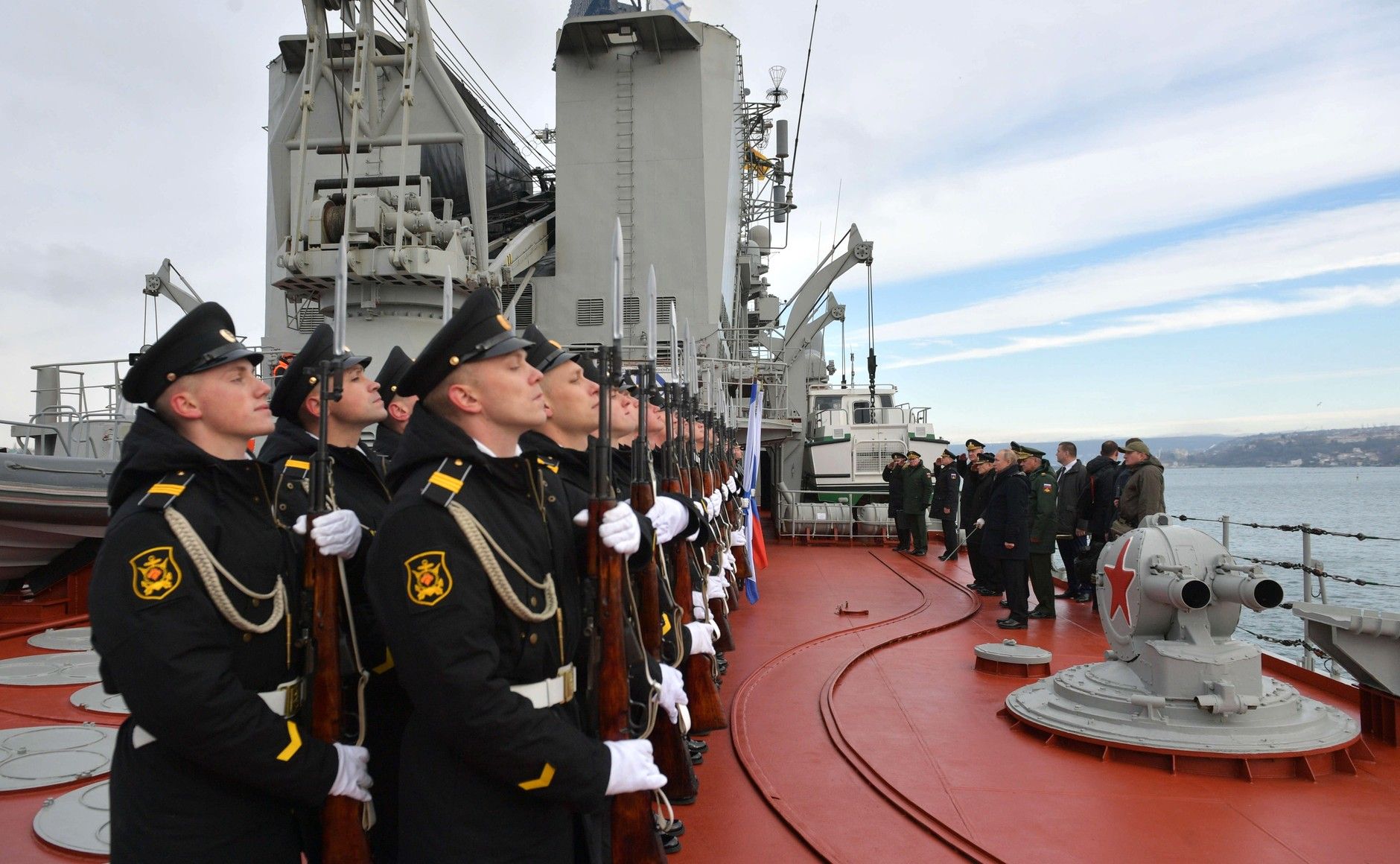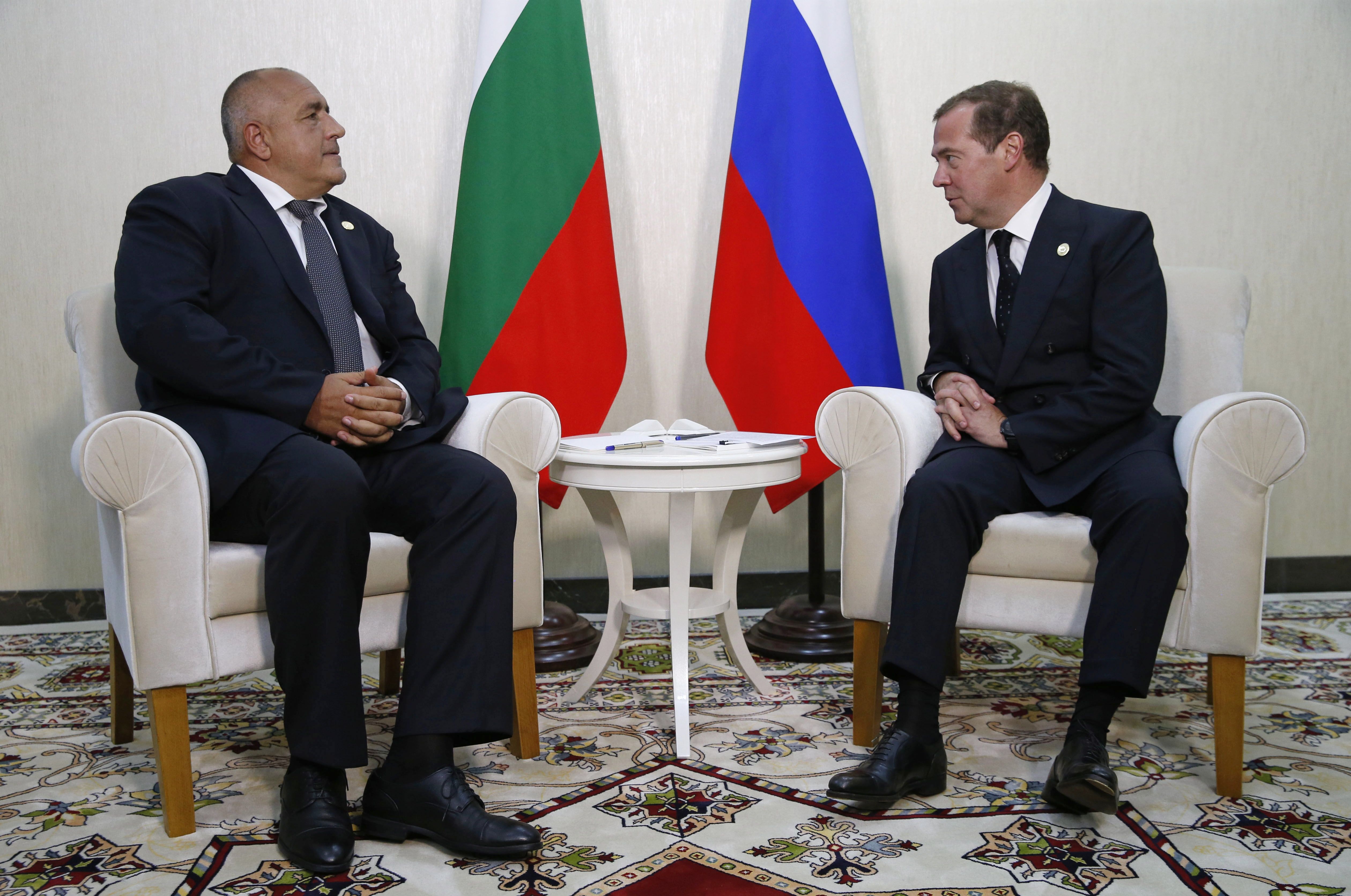The Significance of Russia’s Militarisation of Crimea

Military Dimension
The militarisation of Crimea has allowed Russia to re-establish the dominance in the Black Sea Basin lost after the breakup of the USSR. Since 2014, the number of Russian soldiers stationed in Crimea has doubled to almost 32,000. There are now six times as many armoured vehicles and combat aircraft and eight times as many artillery pieces. What is more, the railway connection between Crimea and the Russian Federation, opened in December 2019, allows the latter to transfer additional forces from the North Caucasus rapidly.
The strengthened potential of the Russian navy in Crimea serves as a counterweight to NATO units in the Black Sea. The number of Russian ships stationing on the peninsula has doubled. Most of them are new submarines and missile corvettes, which technically exceed the potential of NATO units in the region. If necessary, Russia can strengthen these forces with Caspian Fleet ships using the Volga-Don Canal.
At the same time, Russia is expanding its missile capabilities. Radars deployed in Crimea allow Russia to identify targets in the entire Black Sea area. The identified air and sea units are within range of its S-400, Bastion, and ballistic missile systems located on the peninsula. The Bastion systems can engage naval and ground targets on the Black Sea and the coast of NATO countries—Romania and Turkey. The S-400 systems’ range covers most of the Black Sea, southern Ukraine, and the coast of Romania.
Georgia, Bulgaria, Romania, Turkey, and Ukraine do not have sufficient reconnaissance means or missile and naval forces to counterbalance the Russian advantage. While the potential of the Turkish navy is comparable to that of the Russian Black Sea Fleet, Russia’s missile systems can reduce its effectiveness (Turkey does not have similar missile capacities). The Ukrainian navy has been almost deprived of its ability to perform tasks beyond the defence of the western coastline after Russia took most of its ships in 2014. The situation was not improved by the entry into service of six Ukraine-built artillery boats and two patrol ships received from the U.S. Only Romania and Bulgaria have slightly higher maritime potential. The Georgian navy was abolished and incorporated into the Georgian Coast Guard in 2009 due to the losses it suffered during the war with Russia in 2008. It has only patrol units at its disposal.
NATO has limited capacity to strengthen its military presence in the Black Sea. Under the Montreux Convention, ships from countries outside the Black Sea can stay in the area for a maximum of 21 days. These countries are also prohibited from directing submarines and aircraft carriers to the Black Sea and are restricted by tonnage limits.
Economic Aspect
The Russian aggression against Ukraine and the resulting increased presence of Russian troops in Crimea have had a negative impact on the economic development of Black Sea countries, for example, by blocking trade routes. Russia restricts freedom of navigation in the Sea of Azov, closing selected areas under its control on the pretext of military exercises and conducting numerous and time-consuming inspections of merchant ships sailing to the Ukrainian ports of Mariupol and Berdyansk. The result is a drop in cargo turnover in these ports from 16 million tonnes in 2014 to 7.5 million tonnes in 2018, with estimated losses to both ports of around €18.5 million per year. Similar actions, although on a smaller scale, such as closing selected areas of the Black Sea near sea lanes leading to Ukrainian Black Sea ports under the pretext of military exercises, were repeated by Russia in the area to the west of Crimea. Moreover, the construction of a bridge over the Kerch Strait has allowed Russia to completely block access to the Azov Sea.
The Russian military presence in Crimea reduces the chances of new energy projects being implemented in the region, such as the Sarmatia project, launched in 2004, involving the export of Azerbaijani crude oil via a pipeline through Georgia, followed by tankers to Ukraine and then overland to Poland (with the possibility of transport to Belarus). It discourages investors from launching new extraction projects on the Ukrainian continental shelf as well. In the future, it may also hinder the implementation of plans to build an LNG terminal near Odesa, Ukraine, due to, for example, Russian naval exercises in the Black Sea (the project is currently blocked because of opposition from Turkey, which controls the Bosporus and Dardanelles straits).
Reaction of Countries in the Region
The Black Sea states do not have a common position regarding the militarisation of Crimea. Of the NATO countries, only Romania is unambiguously in favour of increasing the Alliance military presence in the region. It has purchased U.S. armaments (Patriot and Himars missile systems, F-16 fighter jets), elements of an anti-missile shield have been deployed on its territory, it plans to modernise its navy, and takes part in joint exercises of the Alliance with Ukraine. Turkey has a negative attitude towards the militarisation of Crimea; however, it does not support increasing the capabilities of other NATO states, preferring to take independent action to deter Russia—among other things, it offers Ukraine funds to purchase Turkish armaments. Bulgaria opposes the militarisation of the Black Sea by all parties. What is more, it does not perceive Russia as a military threat but considers the Russian military presence to be a balancing power to the Turkish military. For this reason, it will not allow the construction of a NATO naval base on its territory and in 2016 blocked the establishment of a permanent Alliance fleet in the Black Sea.
Ukraine regularly tries to point to the dangers of Russia’s growing military presence in Crimea. The former was one of the initiators (along with Poland and other countries) of a UN General Assembly resolution adopted in December 2019 that expressed concern about the militarisation of Crimea and calling on Russia to cease its actions restricting freedom of navigation in the region. The Ukrainian navy, despite its limited potential, participates in joint exercises with NATO in the Black Sea and is gradually rebuilding its forces in cooperation with France and the U.S. Georgia is strengthening its cooperation with NATO by participating in joint land exercises. However, it does not plan to rebuild its fleet due to high costs.
Conclusions and Prospects
The actions pursued by NATO so far—reconnaissance flights, the rotating presence of Alliance states’ ships—are not sufficient to balance Russia’s advantage gained as a result of the militarisation of occupied Crimea. This would require an increase in NATO capabilities in the region, in particular its missile systems, aviation, and reconnaissance. The Alliance should address the issue of the military imbalance on its Southern Flank as part of the NATO strategic reflection that is in the early stages.
Russia’s actions in the Black Sea limit the chances of implementing energy projects that could provide Central and Eastern Europe with alternatives to Russian supplies. The militarisation of Crimea also has a negative impact on the security of oil supplies by sea from Azerbaijan to Ukraine. This will result in a drop in the profitability of Ukrainian refineries and the preservation of Ukraine’s dependence on fuels from Russia.
In the future, Russia may again blockade the Azov Sea and hinder ship traffic to and from Ukrainian ports on the Black Sea in order to destabilise the country’s economic situation. This would result in a further decline in the attractiveness of Ukrainian ports in favour of Romanian and Bulgarian infrastructure. It would also harm the Ukrainian metallurgical sector and agriculture, both highly dependent on sea exports. Further military provocations against Ukraine would also be possible, aimed at weakening the authority of the central Ukrainian government and sabotaging the ongoing Donbas peace process.
Russia’s militarisation of Crimea does not provide any basis for the EU to start talks on lifting the sanctions against the country, imposed over its annexation of the peninsula, or to intensify the process of “selective engagement” with Russia.





